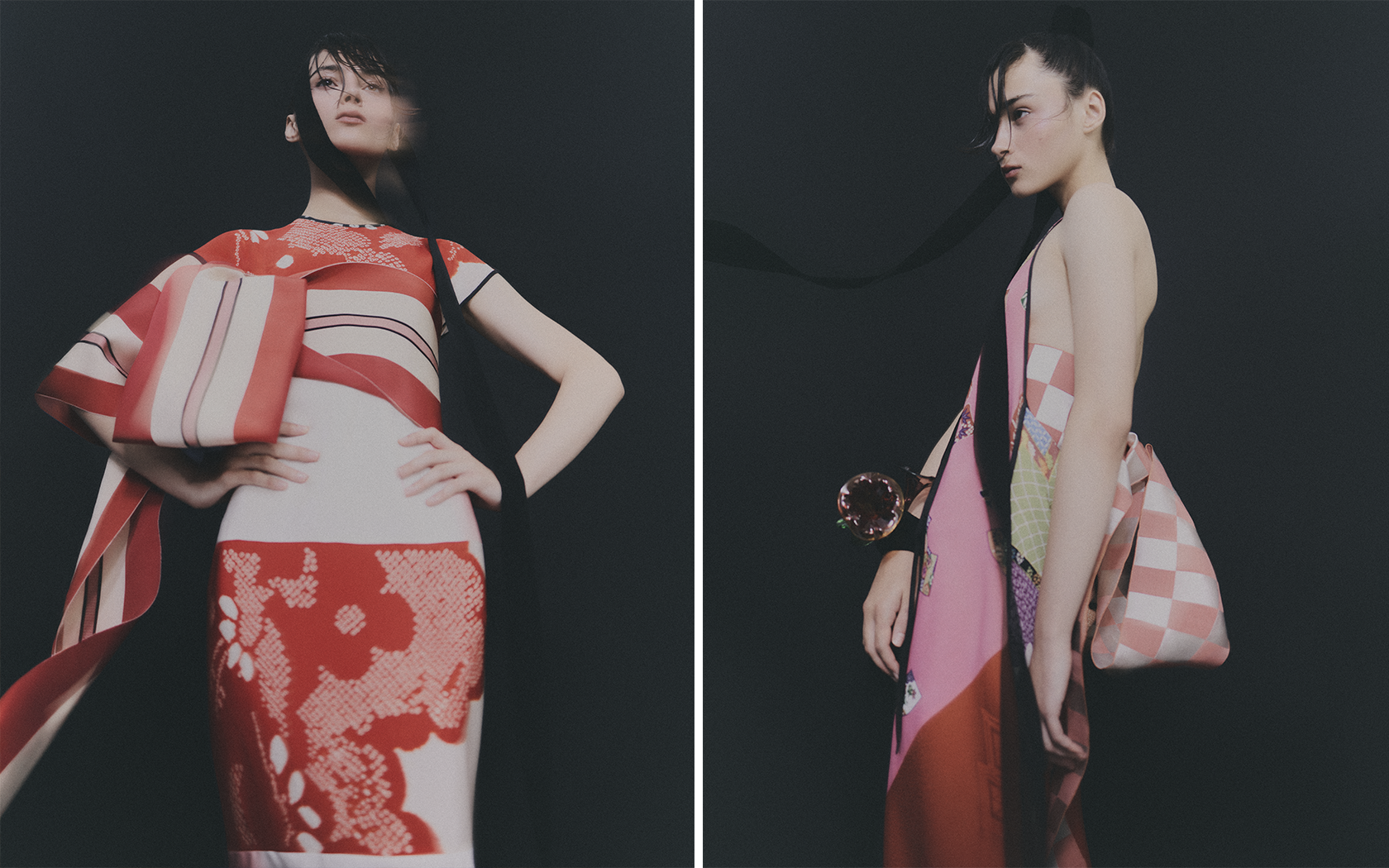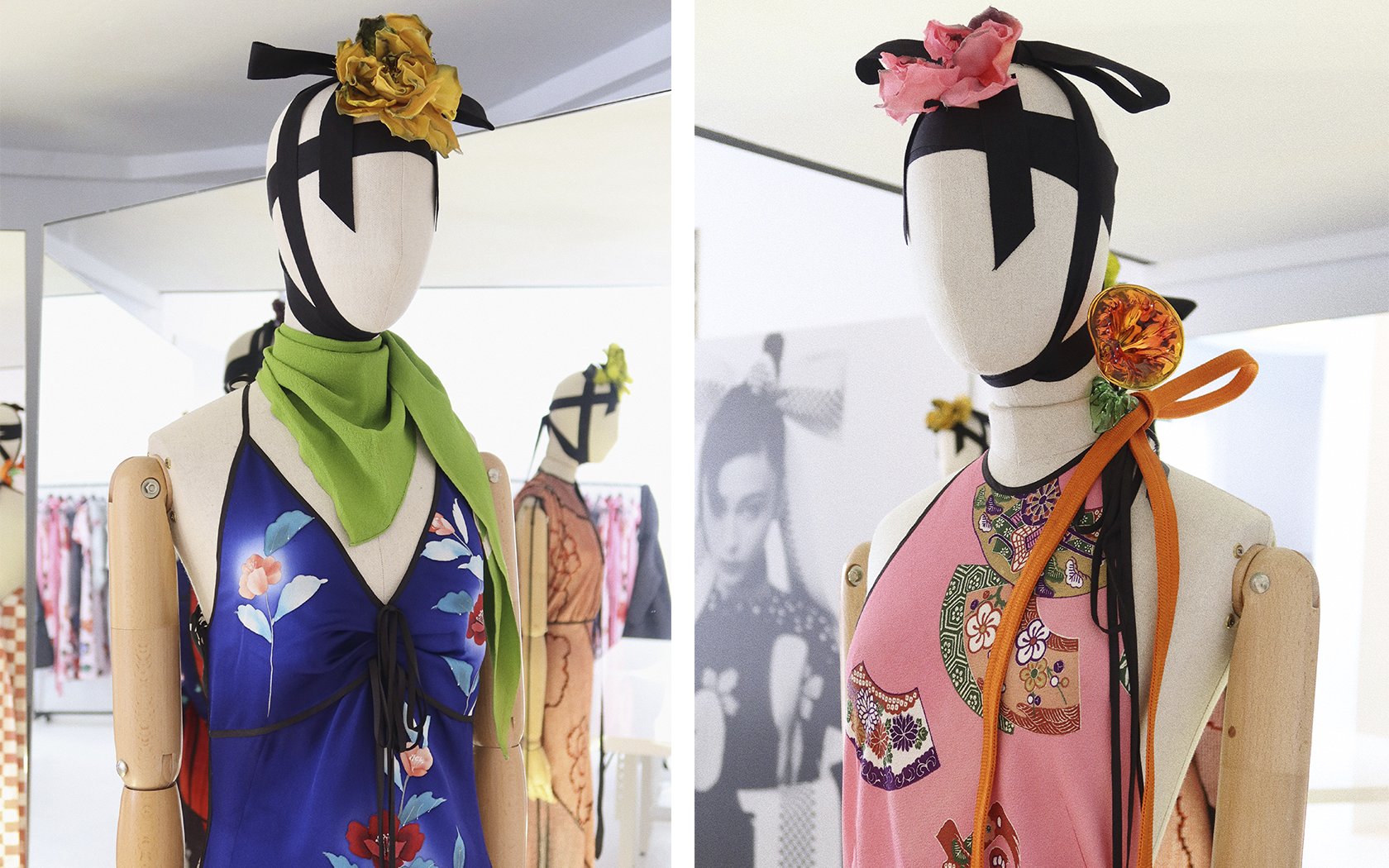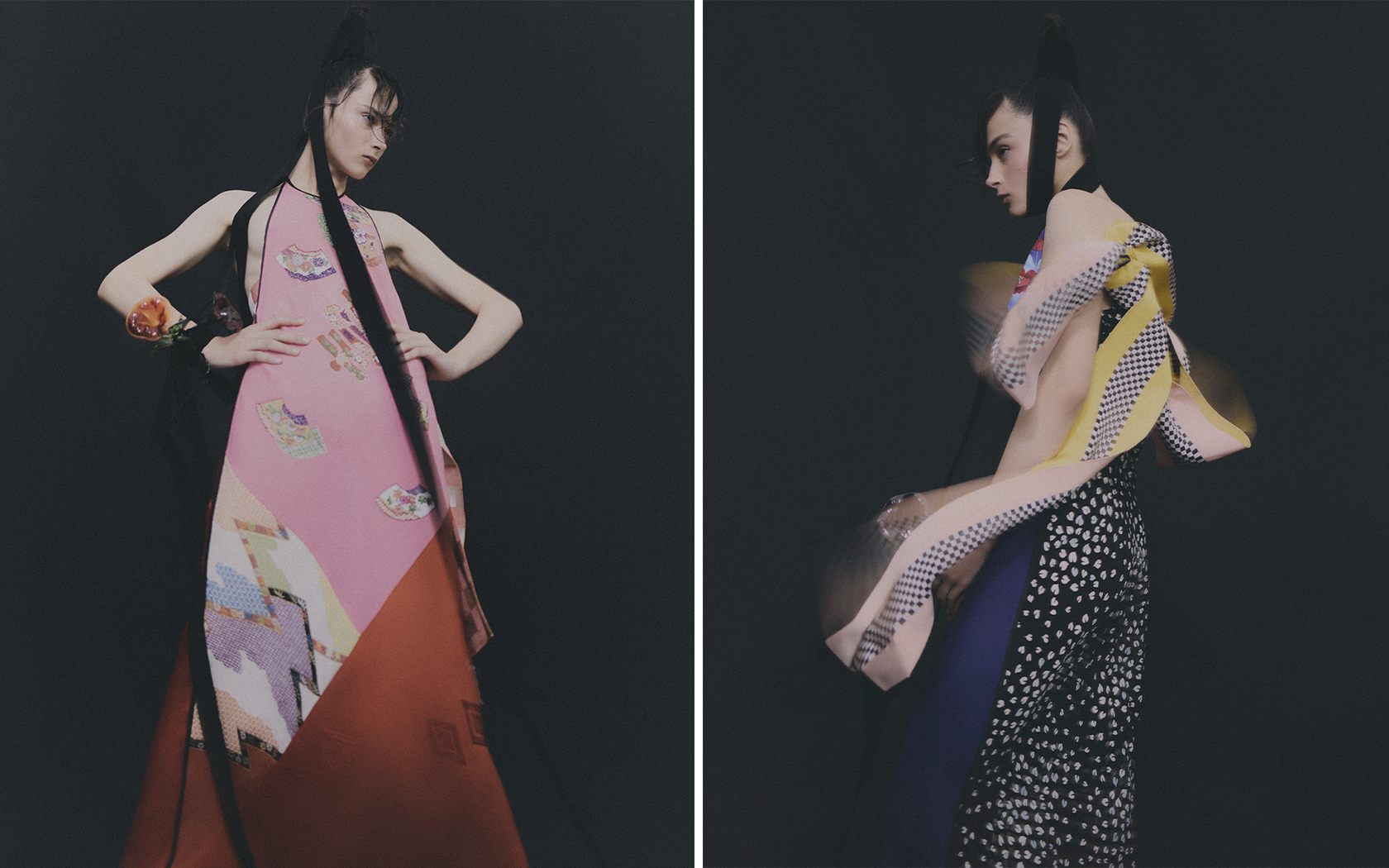Sustainable fashion continues to prove that luxury and respect for the environment can not only coexist, but that together they can elevate creativity to new heights.
Spanish designer Juan Vidal has presented his new capsule collection, Unconscious Gardens, a masterful exercise in upcycling where East and West meet in harmony. Using vintage kimonos found at a Kyoto flea market, Vidal has transformed the traditional pieces into seven Western-style designs, celebrating the Japanese essence, as well as the importance of giving new life to what seemed destined for oblivion.

From left to right: Kimono Panel dress and Kimono Halter Slip. Editorial credit: Juan Vidal.
During his last trip to Japan, the designer came across a set of antique kimonos in a street market. This connection with the fabrics made him reflect on the meaning of fashion where mass consumption eclipses the value of each piece. In this way, he has opted for an artisanal reconstruction by deconstructing, mixing and assembling the fabrics in patchwork compositions.
The Japanese garden as inspiration
The name of the collection, Unconscious Gardens, refers to gardens as sacred spaces, where the connection between the conscious self and the unconscious flourishes. This influence of Zen philosophy permeates each design, making the pieces not only garments, but also artistic manifestations that invite contemplation.

Both pieces exhibited for Juan Vidal’s show. Editorial credit: Juan Vidal.
Although it is conceived as a good place for the spirit, it is said that we can never tame a garden completely, any more than we can tame the soul. The garden possesses an autonomy and randomness that comes from the surprises of nature, which proliferates endlessly. – comments Juan Vidal.
Each of the seven dresses tells its own story. For example, the Tote Kimono model stands out for its long-sleeved Japanese silhouette and box collar. Meanwhile, the Greco Kimono incorporates the kanoko shibori technique, an ancient dyeing method that adds three-dimensional texture to fabrics. The Slip Halter Kimono, on the other hand, uses selected silk panels to create hand-dyed and positioned flowers, demonstrating the meticulous care with which each garment has been crafted. Overall, this collection stands out not only for its design, but also for the emotional and cultural essence that the inherited materials bring.
The art of the upcycling revolution
The designer’s upcycling process is a statement of intent towards sustainable fashion, as well as a lesson in how the old can become timeless. By reusing materials steeped in history, the designer creates pieces that celebrate the beauty of traditional textiles, and promote a narrative against disposable consumption.

The dresses feature hand-painted floral details. Editorial credit: Juan Vidal.
With Unconscious Gardens, Juan Vidal redefines the relationship between fashion and sustainability, but rather invites us to reflect on the value of what we discard and the potential of what we can reinvent. In a world where the fashion industry seeks solutions to environmental impact, this collection is presented as an inspiring example of how creativity, craftsmanship and ecological awareness can intertwine to give life to unique pieces.




